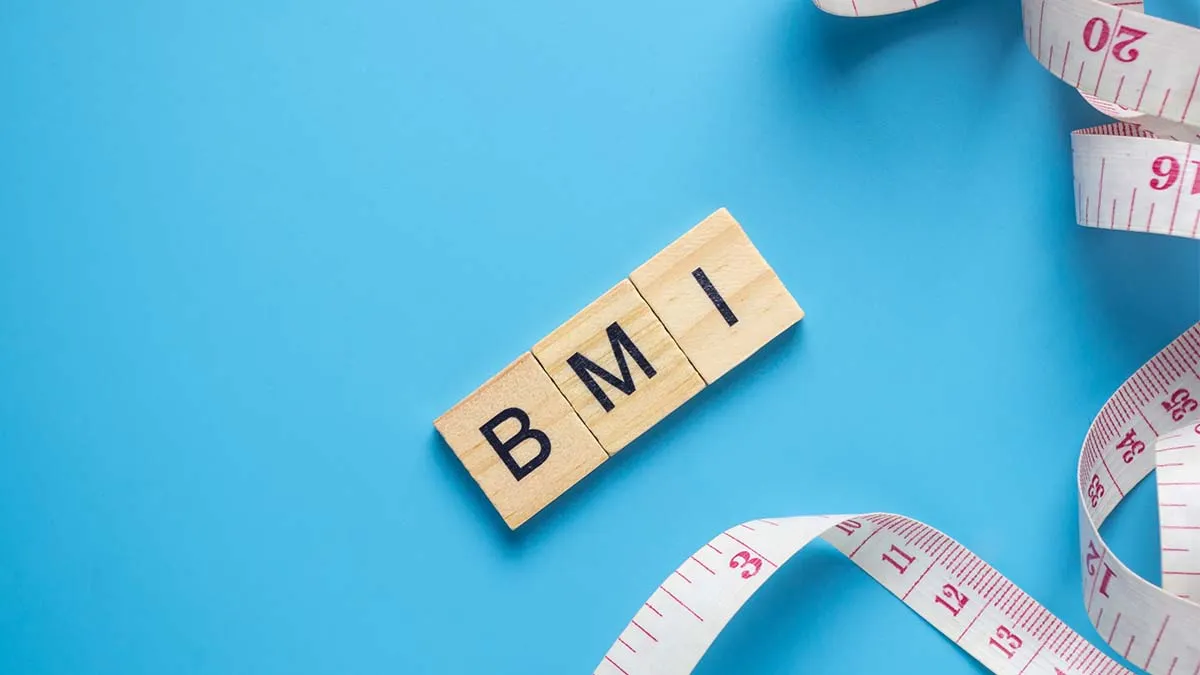Maintaining a healthy weight is a goal that many women strive to achieve, but determining what exactly constitutes a healthy body mass index (BMI) can often be confusing. BMI is a commonly used tool to assess whether an individual’s weight falls within the healthy range based on their height. However, the ideal BMI for women can vary depending on various factors such as age, muscle mass, and overall health. In this article, we will delve into the concept of BMI and explore the range that is generally considered healthy for women, shedding light on why it’s crucial to focus not only on numbers but also on overall well-being.
Understanding the importance of BMI in women
Understanding the importance of BMI in women goes beyond simply wanting to achieve a certain body shape or size. It is a crucial indicator of overall health and plays a significant role in disease prevention. Maintaining a healthy BMI can help reduce the risk of various conditions such as heart disease, diabetes, and certain types of cancer.
BMI provides an objective measurement that takes into account both weight and height. However, it’s important to understand that BMI is not the sole determinant of health, as factors like muscle mass and body composition are not considered. Nevertheless, it serves as an essential starting point for individuals to assess their general wellbeing and strive towards achieving optimal health.
What is BMI: Definition and calculation
BMI, or Body Mass Index, is a commonly used method for assessing body weight and determining whether an individual falls into a certain weight category. It is calculated by dividing a person’s weight in kilograms by their height in meters squared. However, while BMI provides a numerical value that can help individuals gauge their overall health and identify potential risks associated with obesity or underweight, it should not be considered the sole determinant of one’s health status.
One thing to keep in mind when it comes to BMI is that it does not take into account factors such as muscle mass and distribution of body fat. This means that individuals who have higher muscle mass may fall into the overweight or obese categories according to their BMI, even if they have low levels of body fat. On the other hand, older adults or those with low muscle mass may have normal BMIs but still harbor dangerous levels of visceral fat which could put them at risk for various health issues. Another limitation of using BMI as a measure of health comes from its lack of consideration for genetic variations and individual differences. People come in all shapes and sizes, and what may be considered healthy for one person may differ significantly from another’s ideal range. So although it can be helpful as a basic tool to assess large populations on average, when applied at an individual level without considering other factors like waist circumference or blood lipid profiles – its accuracy diminishes greatly.
Healthy BMI range for women
The concept of body mass index (BMI) has long been used as a measure of weight and health, but what is the healthy range for women? While a BMI between 18.5 and 24.9 is generally considered to be within the normal range, recent studies have highlighted the limitations of this calculation in assessing individual health. The American Journal of Clinical Nutrition suggests that simply relying on BMI may not provide an accurate picture, as it does not take into account factors such as muscle mass and distribution of fat.
Instead of solely focusing on falling into a specific BMI range, it may be more valuable for women to consider other indicators of health, such as body composition and overall fitness level. For instance, strength training exercises can help build lean muscle mass which can increase metabolism and improve overall health. Rather than striving for a particular number on the scale, emphasizing an active lifestyle that includes regular exercise and balanced nutrition can lead to improved well-being regardless of where one falls on the BMI chart.
Factors influencing a healthy BMI
One of the primary factors influencing a healthy BMI in women is diet. A balanced and nutritious diet consisting of lean proteins, whole grains, fruits, and vegetables can help maintain a healthy weight. Incorporating portion control and avoiding excessive consumption of processed foods high in added sugars and unhealthy fats can also contribute to maintaining a healthy BMI.
Physical activity is another crucial factor in achieving a healthy BMI. Engaging in regular exercise not only helps burn calories but also strengthens muscles and boosts metabolism. Incorporating a combination of cardiovascular exercises, strength training, and flexibility exercises into one’s routine can provide optimal results for achieving and maintaining an ideal BMI.
Additionally, genetics play a role in determining body weight and composition. Some individuals are genetically predisposed to have higher or lower BMIs than others even with similar lifestyle habits. However, it is essential not to use genetics as an excuse but rather adapt one’s lifestyle by focusing on factors within our control such as diet and exercise to achieve optimal health regardless of genetic influences.
The dangers of an unhealthy BMI
Maintaining a healthy BMI is crucial for overall well-being, especially for women. While it’s common knowledge that being underweight can have negative consequences, it’s equally important to understand the dangers of an unhealthy BMI in the opposite direction. A high BMI, classified as overweight or obese, can significantly increase the risk of chronic diseases such as heart disease, diabetes, and certain types of cancer.
Furthermore, an unhealthy BMI has broader implications beyond physical health. It can also impact mental well-being and self-esteem. Society often perpetuates unrealistic beauty standards that glorify thinness, leading many individuals to strive for a lower than healthy BMI. However, this constant pressure to conform to societal expectations can result in body image issues and disordered eating patterns such as binge-eating or extreme dieting. Educating ourselves on the dangers of an unhealthy BMI allows us to approach our health holistically.
Conclusion: Striving for a balanced and healthy lifestyle
In a society that often places an overwhelming emphasis on physical appearance, it can be easy for women to become fixated on their weight. However, the number on the scale does not always tell the full story of one’s health. Enter BMI, or Body Mass Index, a widely used tool in determining whether an individual falls within a healthy weight range. But what exactly is a healthy BMI for women? In this article, we will delve into the concept of BMI and explore how it can be used as a guide to assess overall health and well-being for women across different stages of life. Prioritizing physical fitness over weight alone ensures that we focus on maintaining a balanced lifestyle rather than obsessing over numbers on a scale. By doing so, we not only reduce our risk of chronic diseases but also foster a positive relationship with our bodies and promote overall happiness and well-being.

























+ There are no comments
Add yours